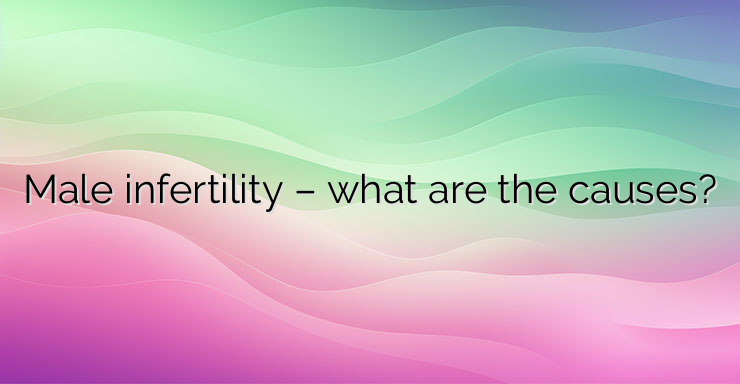Under the term infertility (infertility) we mean the impossibility of pregnancy in the family within about 1 year of regular sexual life. Unfortunately, today more and more couples are having unsuccessful attempts to get pregnant and have to use assisted reproduction methods. Data indicate that 12-28% of couples cannot have a child. For many years, the main “culprit” for infertility in the family was the woman. In fact, the incidence of infertility among men and women is almost equal, with a slight preponderance in favor of women – about 30% for men and about 45% for women, respectively. In the remaining 25%, the violations are present in both partners at the same time. Five important conditions from the man’s side for fertilization to occur. In order for the egg to be fertilized, it is necessary first to have normal spermatogenesis, i.e. formation of mature and fertilizable spermatozoa. After their formation, they must continue their period of maturation and movement along the intact genital ducts. It is necessary to form the final result – the seminal fluid (ejaculate), which, in addition to spermatozoa, also contains seminal plasma, secreted by the accessory sexual organs (prostate, seminal vesicles), and is a source of important nutrients for spermatozoa. The most important condition for fertilization to occur is for the man to deposit the ejaculate in front of the cervix around the time of ovulation! Sperm must be able to pass through the cervical canal (neck of the uterus) and reach the fallopian tubes, where fertilization normally occurs. This condition could not be fulfilled in the case of anatomical obstacles in the female reproductive tract or disorders in the motility or fertilizing ability of the spermatozoa. What are the possible causes of male infertility? Affecting any link in this chain of physiological processes would result in male infertility. Endocrine causes of male infertility account for about 4% and include diseases affecting the hypothalamus, pituitary gland, testicles, adrenal glands or thyroid gland. Hypogonadism in all its forms, with few exceptions, leads to impaired spermatogenesis and, accordingly, infertility. However, unlike primary hypogonadism (primary involvement of the testicles), in secondary forms (the primary cause is in the hypothalamus or pituitary), pharmacological induction of spermatogenesis could be achieved. In 15%, deviations in the sex chromosomes, cryptorchidism (undescended testis in the scrotum, the process may be bilateral), involvement of the seminiferous tubules and other forms of primary involvement of the testicles are found. One clarification: the seminiferous tubules occupy half of the volume of the testicles and spermatogenesis takes place in them. NEWS_MORE_BOX Infertility may be due to congenital or acquired damage to the epididymis and/or ductus in nearly 6% of cases.In the epididymis, spermatozoa stay between 12-14 days and there they undergo morphological and functional changes important for their maturation. Mature spermatozoa pass through the ducts and mix with the secretions of the seminal vesicles, the prostate and the bulbourethral glands. The technique of intercourse should not be underestimated, as well as the presence of erectile dysfunction, anatomical anomalies, such as hypospadias or epispadias – they can be the cause of infertility in about 4-5% of cases. In 6-10%, fertility is impaired by autoimmune processes that lead to agglutination (gluing) and immobilization of sperm. In nearly 35% of cases, no cause is found. This is the so-called idiopathic infertility. Varicocele is found in 25-40% of the idiopathic infertility group. The effect of varicocele on fertility is still unknown, because 8-20% of healthy men without evidence of infertility also have varicocele.


Leave a Reply